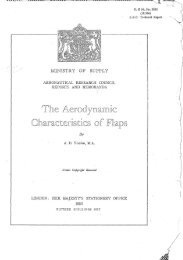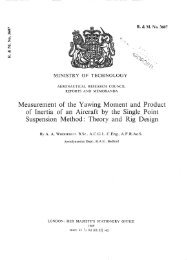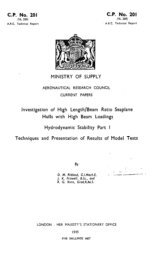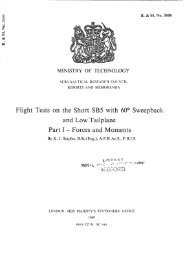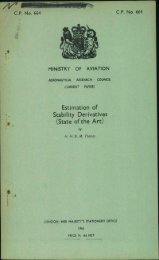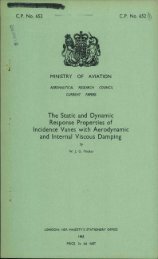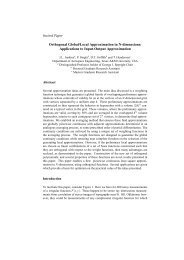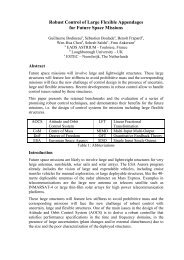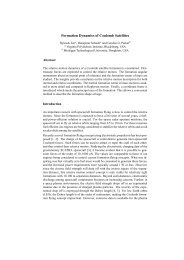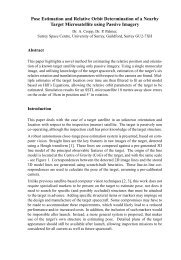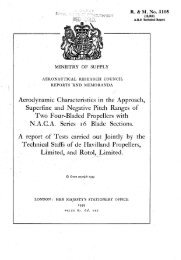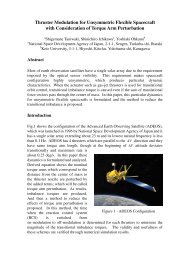A Survey of Unsteady Hypersonic Flow Problems
A Survey of Unsteady Hypersonic Flow Problems
A Survey of Unsteady Hypersonic Flow Problems
You also want an ePaper? Increase the reach of your titles
YUMPU automatically turns print PDFs into web optimized ePapers that Google loves.
- 36 -<br />
will no longer apply and a simple expansion from conditions downstream <strong>of</strong> the<br />
nose would not exist. In this case, it will be necessary to apply Kennett's<br />
small-perturbation analysis to a suitable bluff body flow solution to find the<br />
nose conditions, and apply Halt's small perturbation analysis to a characteristics<br />
solution <strong>of</strong> the steady flow downstream <strong>of</strong> the nose. Such analysis will apply,<br />
<strong>of</strong> course, only for small amplitude motions <strong>of</strong> the body.<br />
The results <strong>of</strong> small-disturbance theory will still apply for low aspect<br />
ratio wings with sharp sections for which M oos A > 1, and for pointed slender<br />
bodies for which Id6 < 1 at moderate incidence, and consequently, unsteady flows<br />
around such bodies can be found from calculation <strong>of</strong> an equivalent series <strong>of</strong><br />
steady flows. But the only way <strong>of</strong> calculating the equivalent steady flows would<br />
seem to be the characteristxs method - though some sunplification <strong>of</strong> the proce s<br />
t.0<br />
may be brought about by applying the linearized characteristics method <strong>of</strong> Ferri .<br />
Newtonian impact theory provides a simple method for estimating the<br />
aerodynamic forces on wings and bodies at incidenoes above those far shook<br />
detachment, but the predictions made are necessarily unreliable. A satisfactory<br />
method <strong>of</strong> dealing with these flows, for small amplitude motions <strong>of</strong> the bodies,<br />
seems likely to involve the application <strong>of</strong> a small-perturbation analysis to a<br />
satisfactory steady flow solution. Similar conclusions apply to the problems<br />
<strong>of</strong> bluff bodies, and real vehicle shapes: In both cases analyses have been<br />
made using Newtonian impact theory but these, obviously, have only limited value<br />
and a small-perturbation analysis is required - if an adequate steady solution<br />
exists.<br />
In those oases where it has been suggested that a small-perturbation<br />
analysis applied to a steady solution is likely to be the only way in which a<br />
satisfactory unsteady flow analysis can be made, it has been made clear that the<br />
method can only be applied for small-amplitude disturbances. There seems to be<br />
no alternative to a quasi-steady analysis <strong>of</strong> the flow around a body is undergotig<br />
large amplitude displacements. In practical oases this will certainly be<br />
adequate for most oasewsince such motions are unlikely to involve large frequew<br />
parameters.<br />
APPENDIX III/



